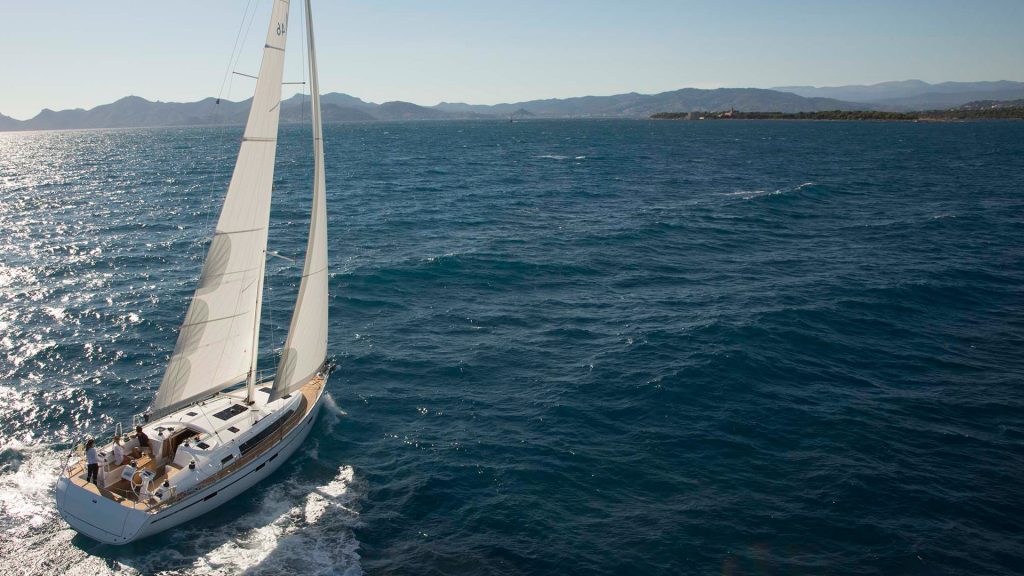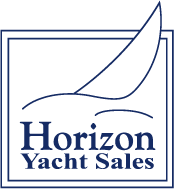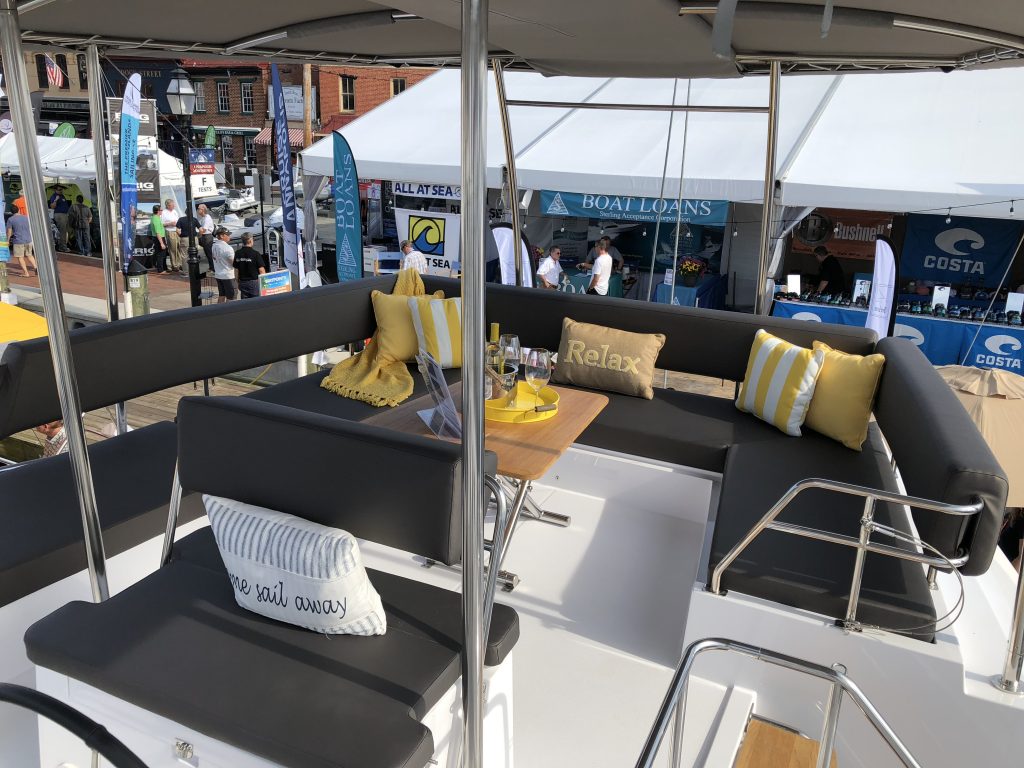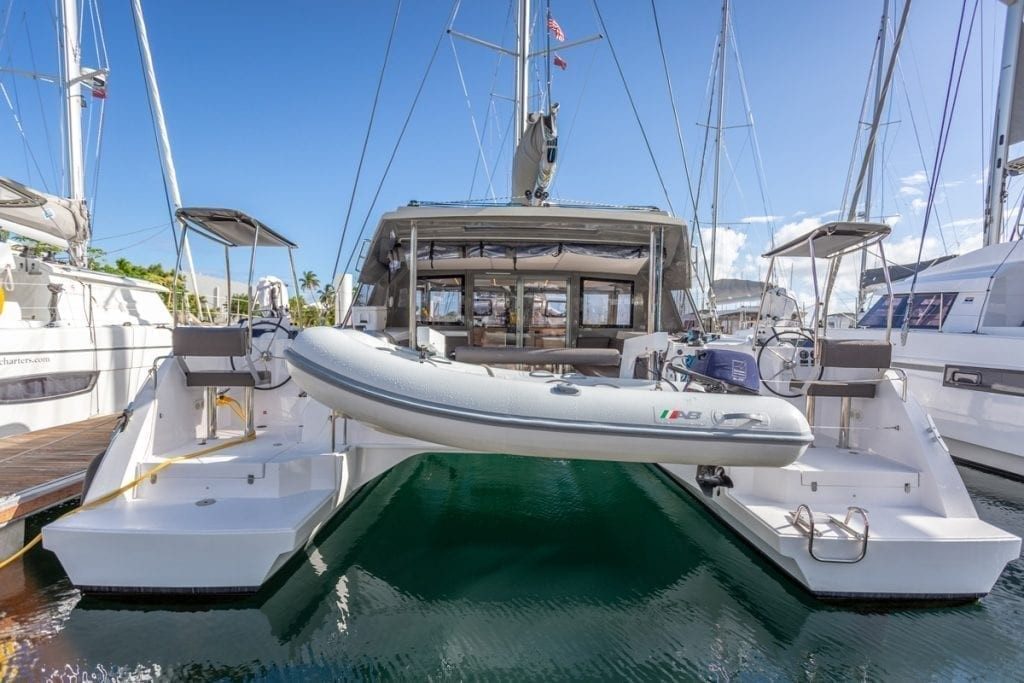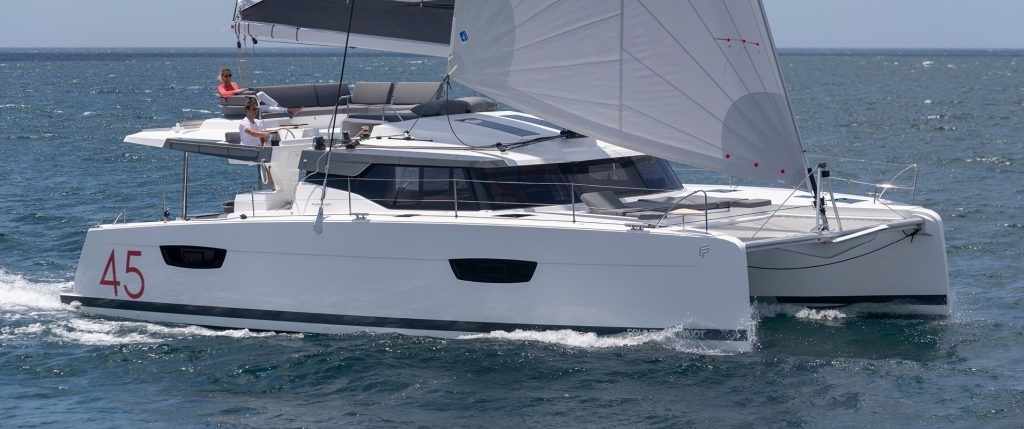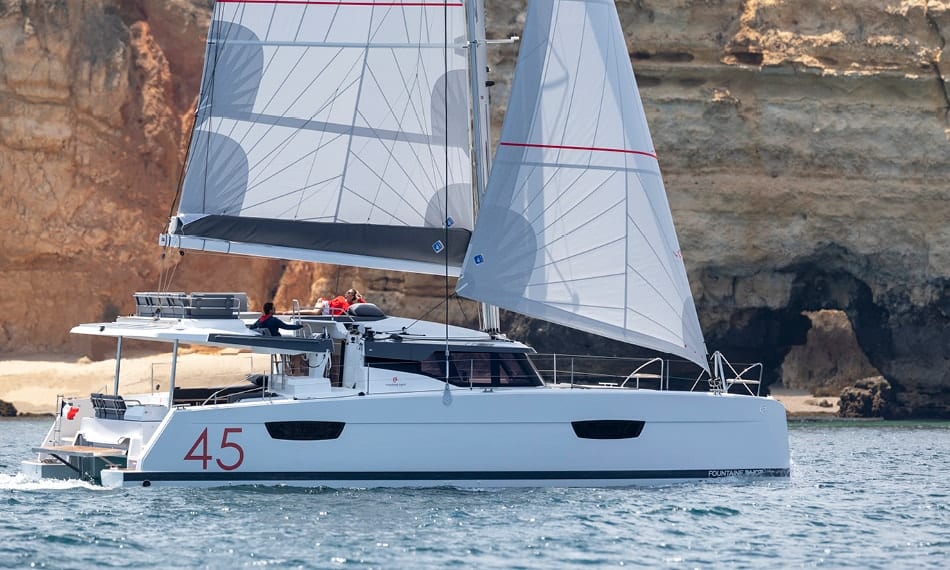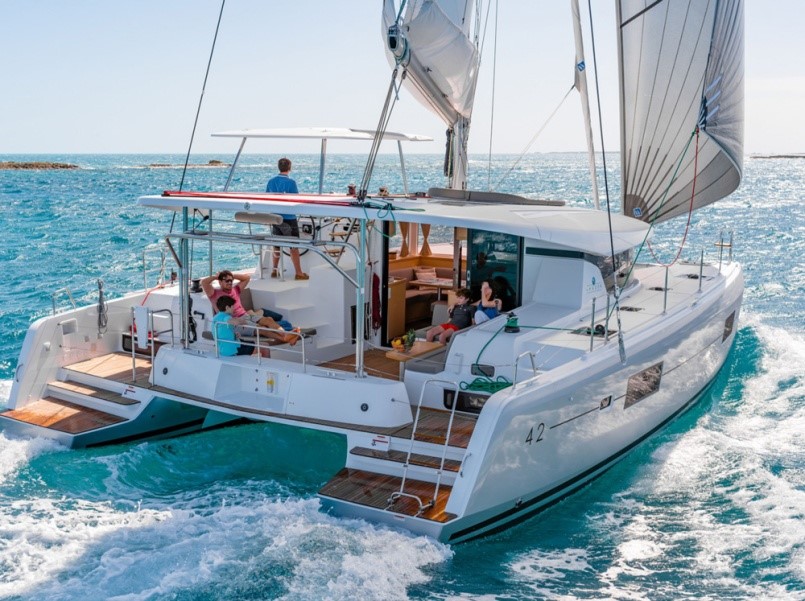Horizon Yacht Sales - Our First Blog Post!
Sitting Pretty? Which is the preferred helm position on a Cruising Catamaran?
Here is the first post in a short series of blogs that consider a few questions that yacht buyers may be asking themselves as they look for their next yacht or catamaran. In this series, there will be some big questions and some small, but in exploring the answers hopefully, you will find it interesting and informative.
In this first blog, I am going to look at the helm positions on catamarans. Lagoon, Fountaine Pajot and the slightly more performance-oriented Nautitech. Each offers excellent catamarans and the three helm options you’ll see are the Fly-bridge, the Twin and the Hybrid, (the one that is raised to port or starboard but not a full Fly).
I’m not looking at higher-performing cats like Catana and the tillered options from Outremer. But coming from a racing background I have opinions on these cats, but that is for another time.
If your sailing is in relatively protected cruising grounds like the BVI, with smaller sea conditions and reasonable breeze, then you should consider all helm positions and it really comes down to your personal choice. Where your sailing takes you on longer passages, through bigger seas, or maybe where there is more upwind sailing or busy Marinas, all helm positions, in my opinion, are not equal.
The Fly-bridge
The predecessor of the new Lagoon 46, the Lagoon 450, offered a conventional “straight across” fly-bridge and is the biggest selling 45-foot cat in history, itself a testament to the overall popularity of this design.
Newer models can now offer a huge amount of additional real estate up top. The Nautitech 46 Fly has seating for 10 easily and the Lagoon 46 has plenty of lounging space. And there is still the positive of more space in below as there is no encroachment of hybrid pods into the cockpit space The additional seating has certainly helped obviate the issue of the helm being separated from the rest of the crew which has long been a criticism of the fly-bridge, but I know some helms who won’t always see this as a benefit!
There is great visibility forward, albeit with a blind spot behind the jib when sailing. The Fly also offers fantastic all-round visibility when anchored and the upper deck is a very social space.
But life is a compromise (as they say) and additional real estate up top also means a higher boom, less mainsail area, higher centre of gravity with more weight up top and a higher centre of effort, hence more pitching moment.
This translates into some negatives when it comes to sailing comfort and performance, especially in bigger seas. Plus you are also exposed to the elements if you get caught in a squall which could be a tad irritating, even if it is warm rain! In fairness, squalls tend to be short and you can get screens but I am not sure being enclosed is really what the Fly is all about.
Docking with a fly-bridge and a centre helm on a 45-50ft cat may also have some drawbacks. The helmsperson is about 10ft-12.5ft from the side of the boat coming alongside a dock and the cockpit roof tends to restrict visibility when going astern. This can be significant, especially when shorthanded and whilst aft-facing cameras can help with visibility, it’s just not as easy as being able to see the transom relative to the dock.
With the additional windage as well, successful docking relies on trusting the crew and clear communication, which is not always easy when it’s blowing a bit and you’re in a tight spot – and we all know where that can lead!
But overall the new Fly’s offer a great option for island cruising and a great vantage point for looking down into the turquoise Caribbean waters.
Twin helm position
For passage making, the twin helm positions seen on more performance-orientated cruising catamarans like Outremer and Catana have some fundamental sailing benefits. Nautitech offer the 40 Open and the 46 Open both with twin helms and these models definitely bring better offshore passage-making sailing.
Twin helms on the hulls of a cat mean that you are always driving from the favoured side just as you find on modern racing monohulls. The favoured side being dictated by your view of the sail plan – (much easier as you are not ‘underneath the sails’) and your view of other boats
Plus, with Textilene sunshades and isinglass drop-down windscreens, you have good protection from the elements, and of course, you can always ‘hit auto’ and move into the cockpit or saloon.
I wasn’t sure of the twin helm initially for cruising, I thought the lack of visibility to the opposite forward third of the boat would be a major drawback. (Something I have struggled with previously on the Catana). But on the Nautitech, the “Open” cockpit/saloon really is exactly that and blind spots are minimal and living space wonderful. Plus a step or two from the helm seat changes all sightlines, and of course, you can easily walk safely across to the other helm as well.
But for me, it is the improved sailing performance that is the big positive.
As the helm positions are at deck level, weight aloft is minimised, meaningless pitching moment, the lower boom enables more sail area on the main, and lower sheeting for the headsail as well in many cases. Couple this with narrower lighter hulls below the waterline and in both Nautitech models you end up with two great sailing cats.
But what about when it’s time to go back to the marina? Well on most twin helm cats, you have the option of twin throttles on each side, so you are always on the favoured side when docking. If you are manoeuvring in a tight marina, it is often simplest to just drive backwards for a totally clear view. This is a huge bonus and very good for Captain/Crew relationships!
Bulkhead Position
I call this the hybrid position and it is proving increasingly popular among many manufacturers. The 40-45 foot Lagoons and Fountaine Pajot’s all have this as their favoured helm position. Indeed FP’s Saona 47 has a version as well, as does the Lagoon 52 Sportop. Nautitech has also bucked the trend in the over 50-foot range and offer the Hybrid on their 54-foot catamaran.
So do I like? Yes, I do.
There are different designs with varying amounts of space, walkway areas, seating, sail control positions etc but in general, the helm position is appealing.
Why? Well, it has many of the benefits of both the Fly and the Twin – generally, there is a good view forward, as well as good connectivity between the cockpit and helm which will please many. (The Lagoon 42 design with the walkway behind the helm into the cockpit is particularly nice). There is enough space to work the sail controls and usually a decent lounging space on the coach roof, though watch your head when sailing on some designs. Plus these cats are easy to dock one side and, of course, like the Twin have less weight aloft than a Fly.
So arguably you are getting the best of both worlds!
Are there drawbacks? As I’ve said before nothing is perfect! There’s less visibility when reversing than the Twin, and sometimes to see under the cockpit roof requires interesting body positions, but better than the Fly.
Many people will like having the sail controls forward and separate from the helm on some models, for example on the Astrea 42, although this can make short-handed sailing more challenging.
It is more difficult to dock when the dock is on the opposite side to the helm and if you are short-handed, and of course more weight up top than a Twin so more pitching moment, but again less than the Fly.
Overall, and especially for cruising in the BVI and surrounding islands, the hybrid has many positives and it is already proving a very popular design with owners and charter guests alike.
Lagoon 42 – A hybrid, great helm/cockpit connectivity and nice space behind the helm seat
Just a quick word on Big Cats.
If you are looking for a Luxury Cruising Cat then your choice of helm position is pretty much made for you. It’s the Flybridge!
Between 55 and 70 feet, most of the manufacturers offer impressive fly-bridges with extensive seating and luxurious lounging space. The “upper decks’ on Lagoon’s 620, Fountaine Pajot’s Ipanema 58 and the Alegria 67 are prime examples of luxury afloat. Although available to buy for bareboat charter they would mainly cater to the crewed charter market. It just makes sense with cats of this size. That’s another blog for another time!
Final Thoughts
So which is the preferred helm position on a cruising cat? In my view, there is no right or wrong. Each has its own merits and it largely depends on what sort of sailing you are looking to do. Which one you choose will be a personal preference and what makes you feel happy. Maybe try them first and take advantage of Horizon’s “Try before you buy” option.
I certainly appreciate the benefits of each and clearly the three options cater to slightly different needs of the cruising sailor. But with each ticking many boxes whichever you choose you‘ll be sitting pretty!
Al Ashford is a racing sailor living in Antigua.

